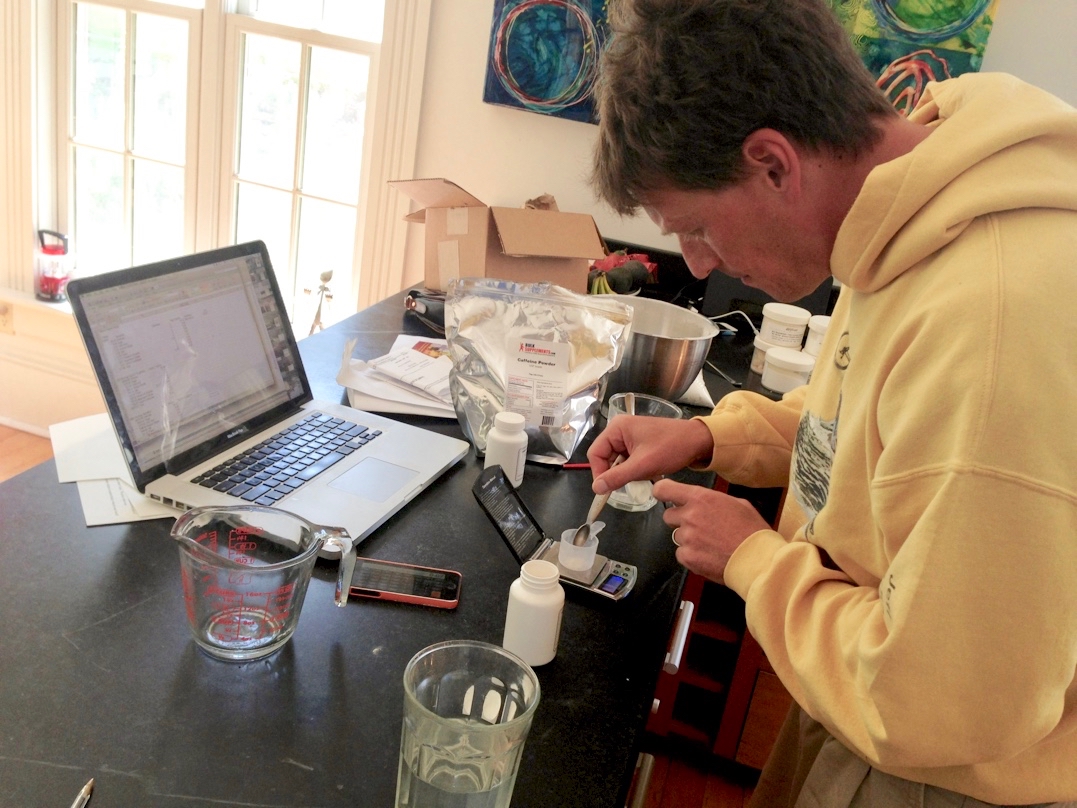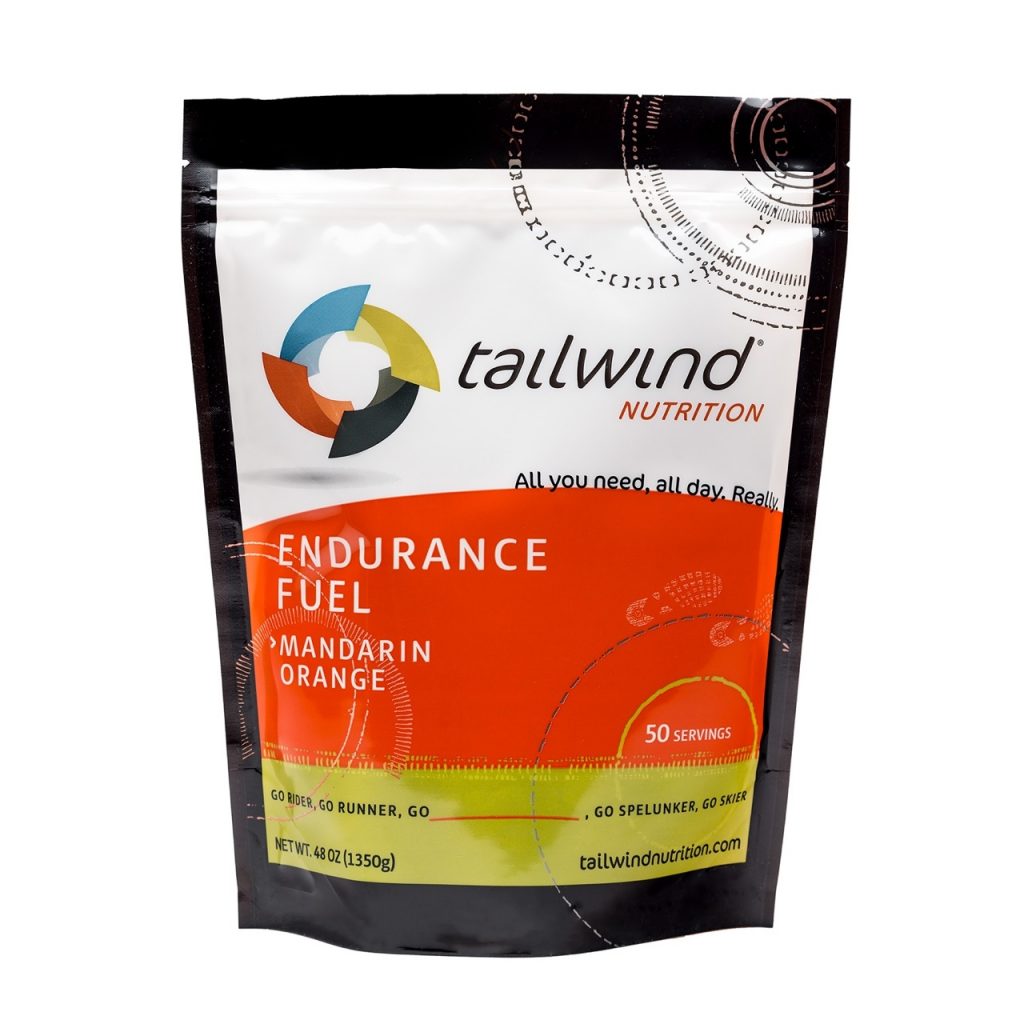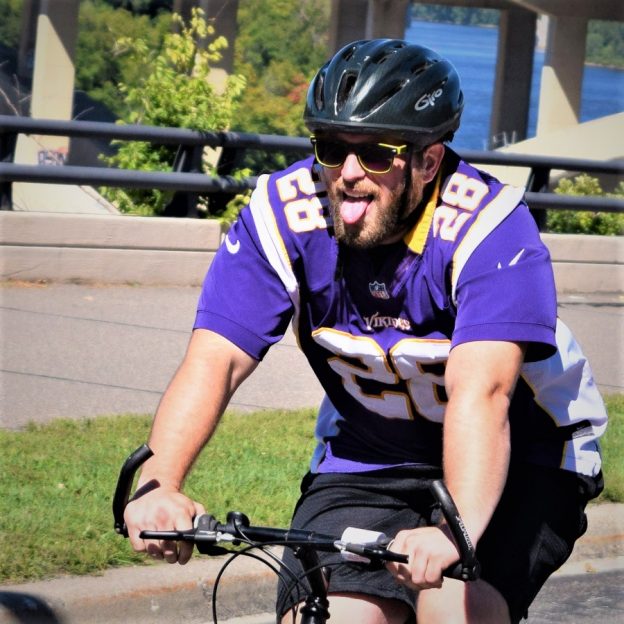by John Brown, HaveFunBiking.com
As you begin doing longer rides like the MS150, Minnesota Ironman, or any other charity ride, sports drinks (cycling nutrition) becomes really important. The basic rule is to replace electrolytes and calories after riding for an hour. Considering most of our rides are longer than one hour, there are many nutritional products designed help. The popular cycling nutrition products are sports drinks, gels, and bars.
Sports drinks, the problem and solution
No doubt you are familiar with the stories of Powebar and Gatorade, both companies were born out of a need for in-activity nutrition and electrolyte replacement. Since their development, there has been many amazing advancements in sports nutrition. Read on to see how Tailwind Nutrition is moving the science forward.
The issue with sports nutrition comes from the fact that in many cases sports drinks have replaced soft drinks and nutrition bars have replaced snacks in many people’s diets. This evolution has led to nutrition that is to sweet, too heavy and resistant to quick digestion during activity. Therefore, most readily-available nutrition products force your body to expend too much energy attempting to digest it. Additionally, because they take so long to digest, they often times cause a stomach soreness.
Tailwind Nutrition’s story
That problem of heavy nutrition is a big part of why Tailwind came into being. The Idea for Tailwind came when Jeff (one of the founders) had trouble keeping his breakfast down when he was competing in the Leadville 100 (a one hundred mile mountain bike race in Colorado). He was struggling with the heavy nutrition products, available at the time. In an effort to fix his own nutrition issue, he used himself as a guinea pig. He consulted nutritionists and then developed a sports drink that fulfilled his calorie requirement, adjusted for electrolyte replacement, that had an incredibly light taste.
After sharing it with friends and selling the new product out of the back of his car at events, news spread fast. Soon the story of a customer who finished a 100 mile mountain bike race, for the first time after a decade of trying, solidified the company into being.

How it tastes
After my twenty years of drinking different sports drinks, Tailwind is a refreshingly light drink. The taste is a great mix of sweet and savory (my guess is that’s the carbohydrates and salts natural flavor). After the initial taste, I was amazed to find that there was no syrupy aftertaste. The aftertaste is really important because as you exercise and increase your breathing rate, any residual flavor can become overwhelming. It is so light that when I finished the bottle of Tailwind, I then filled that bottle with straight water and didn’t detect any aftertaste.

How it works
The best part of the Tailwind products I feel is its consistency. In my experience most nutritional products do a great job of bringing your endurance level up temporarily, then sadly your energy level drops off drastically as you continue on. What I found with the Tailwind products, they deliver consistent energy with no severe drop. Additionally, as the temperature goes up and electrolytes are more important than calories, this product offers salts that are quickly absorbed into the body.
Why use Tailwind
I know what you’re thinking, why shouldn’t I just grab a Gatorade down at the ole’ Circle K before my weekend ride? Well, the answer is as easy as comfort, results, and cost.
First, I have tried most sports drinks on the market and all of them left me feeling the same way – sick. Those heavy drinks sit in my stomach and sometimes, attempt to come back up again. By contrast, the Tailwind stuff never made a peep in my belly. Additionally, Tailwind offers 200 calories per serving rather than the 150 calories from Gatorade. That’s not only more calories, but I found they were better calories. Typical sports drinks gave me an initial energy boost, but then dropped off severely. By contrast, I found Tailwind to give sustained energy, but no harsh drop off. Finally, Tailwind is way cheaper. Tailwind can be as little as $.75. When compared to Gatorade at more than twice that per bottle. To me Tailwind makes good sense.

All in all, nutrition is a personal preference. While I may like one product, that doesn’t necessarily guarantee it is the right product for you. With that being said, I feel that Tailwind offers a great product for even the most sensitive stomachs. Give it a try, I think you will like how it works.



Comments
2 responses to “Cycling Nutrition Review: a clean, smooth approach to sports drinks”
Does Tailwind make a sugarless version? I use ZipFizz for my energy drink. No sugar added. All the other nutritional information is similar to Gatorade. Being diabetic, I need to watch my sugar intake.
Hey Paul,I reached out to Tailwind Nutrition for the answer to your question. Please see their response below.
….We do not make a sugarless version because if you want to have fuel for your adventures, you need a form of sugar. With ZipFizz you only get 20 calories per serving – which is not enough to fuel you. With respect to diabetes, we do have diabetics who are successfully using Tailwind because you are metering your intake of sugar, and if you are exercising, the insulin response is muted. We always suggest that customers show the nutrition label to their doctors first though.
Here is a great article: https://cehsp.d.umn.edu/sites/cehsp.d.umn.edu/files/nutritionforathletesexercisingandcompetingwithtype1diabetes.pdf
Synopsis:
In general, carbohydrate recommendations
increase as daily exercise duration and
intensity increases. For people engaging in
a combination of aerobic or strength training
exercise would require 5-7 grams of
carbohydrate/kg body weight/day. For
individuals that perform endurance exercises
such as running or cycling the carbohydrate
intake should be in a range of 7-10 grams of
carbohydrate/kilogram of body weight/day.
For ulta distance or very prolonged exercise,
the requirement increases to 10-12 grams of
carbohydrate/kilogram body weight/day.
Hope this helps,
Jenny